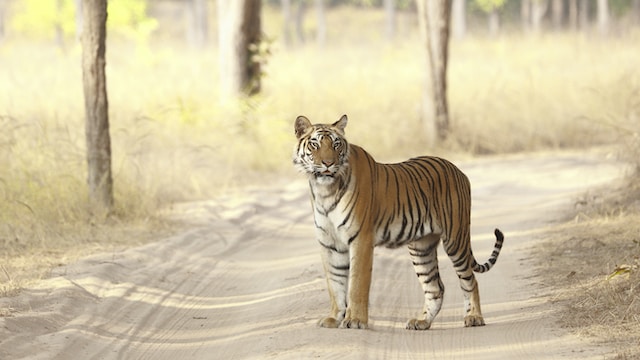Bandhavgarh National Park | Area, History, Wildlife, Tourism & Conversation
Bandhavgarh National Park is a renowned Wildlife sanctuary located in the Indian state of Madhya Pradesh. Bandhavgarh National Park is surrounded by high Hills. It is known for its rich Biodiversity and is particularly famous for Bengal tigers. This park has a special fort which houses temples and statues of ancient times. Every year a large number of tourists come to visit this park.
Location and Area
Bandhavgarh National Park is situated in the Umaria district of Madhya Pradesh, India. The Park covers an area of approximately 1150 square km (600 square miles). There are total 6 Zones in this Park, 3 Core area Zones and 3 Buffer Zones. Core area Zones – Tala, Magadhi, Khitauli and Buffer Zones – Johila, Dhamokhar and Panpatha.
History
Bandhavgarh National Park has a rich historical and mythological significance. This Park was named after the largest Hill Fort amidst the Forest. It is said that when Lord Rama was returning from exile, he stayed here and built this fort but later handed it over to his brother Lakshman. There are many temples, statues and ancient art in the fort. Now this fort has become ruins. When the tigers here were on the verge of extinction due to hunting, then hunting of tigers was banned here and this park was declared a National Park in 1968 and the Tiger Project Act in 1972 and it was declared a Tiger Reserve in 1973. So that the forest department can protect this park and monitor the tigers and wild animals here.
Wildlife
Bandhavgarh National Park is home to a wide variety of flora and fauna. Apart from Bengal tigers, which are the star attraction, you can also find other big cats like Leopards and various species of Deer, including the spotted deer and Sambar. Additionally, it’s a habitat for various bird species, There is also a vulture Bird here making it a popular destination for birdwatchers. Apart from this, there is Gaur animal here which is of cow species which is very popular.
Vegetation
Bandhavgarh National Park features a diverse landscape, with dense forests, grasslands, and rocky hills. The Sal forests dominate the vegetation, creating a picturesque setting. Many species of trees are found here. However, the best month to see the beauty of the forest is October when Bandhavgarh National Park is opened for tourists to visit.
Tourism
Bandhavgarh National Park is a popular tourist destination for wildlife enthusiasts and nature lovers. Visitors can explore the Park on Jeep Safaris and Elephant Safaris to spot the Wildlife and enjoy the natural beauty of the area. This park has an ancient fort which has temples and statues of ancient times which tourists visit. Safari in this Park is available in the morning and afternoon hours. There are three Zones for tourists to visit – Tala Zone, Magadhi Zone and Khitauli Zone. There are various accommodation options available near the park, ranging from budget to luxury resorts and lodges, ensuring a comfortable stay for visitors. This park remains closed for tourists during monsoon.
Conservation
Bandhavgarh National Park has been successful in its conservation efforts for the Bengal tiger. It was declared a Tiger Reserve in 1973, which aims to protect and conserve the endangered Tiger population in India. There may be more than 75 Tigers in Bandhavgarh National Park by now. To monitor and protect these Tigers, the Forest Department team conducts elephant safaris from time to time and they also keep protecting the entire park so that more wild animals can be protected.
Best Time to Visit
Bandhavgarh National Park remains open for tourists from October to June. But the ideal time to visit is during the winter months, from October to March, when the weather is cooler and the Wildlife is more active and chances of spotting tigers and wildebeest are higher. Safari in this Park is available in the morning and afternoon hour.









